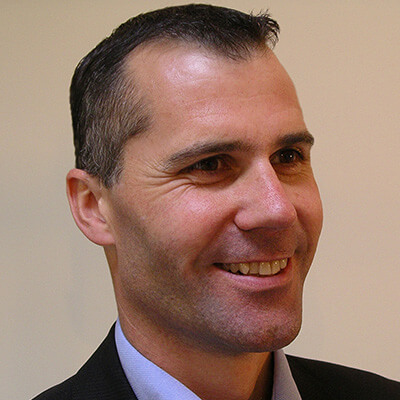Consider the conundrum of the artist who paints themselves into a picture. The artist is depicting a painting of him/herself painting a landscape. During painting the picture, the artist feels that there is something missing. So, the artist, in order to feel that he /she is a crucial part of the painting, paints a picture of an artist painting a picture of an artist paining a landscape. This repainting of the picture an infinite number of artists in the picture, and yet, the artist is still outside of the picture.
Strange start to an article? Read on. The same conundrum can be referred to the Internet of Things, where, by definition, devices, not humans; things, like equipment sensors send information concerning location, other sensors connections, environment, etc., to a myriad of collection centres, which in turn feed that information to others. The same conundrum arises. If you are responsible for managing a technologies which utilises sensor feed data, how can you ensure that you know everything about the sensor feed data? How can you govern its quality? How can you be sure of the integrity of the data? What kind of support, both technical and business, is available to the devices providing the sensor feed, the software whose job it is to gather and record that data in the first place?
So, how does SharePoint, in terms of content management, fit in? Does it even fit? Is SharePoint a crucial aspect in the provision of data provided by sensors? This non-information worker data, which is therefore not defined as personal (in the sense that a human actually created the content), and yet, in many cases crucial to the operation of any process, is that it needs to be managed.
The gathering of sensor data across networks and storing it in a central database or data host is not new. We have been doing it ever since first photographs in the 19th century. In terms of software, user interactions would be logged as part of audit trials, data updates etc. The explosion of networked sensor connectivity means that more and more direct and indirect our interaction with equipment is being monitored and turned into analytics. Examples can be anything from a Tennis Racket to a Traffic Cone to a Fridge to a Cooker to a Washing Machine to a Bicycle to a Car and beyond. Additionally, the data provided may be harvested by another device, or combined with data from another device. The point is, how can you be sure of the integrity of the data provided, how can you ensure that there is adequate support, communication, management of the sensors providing the data?
Internet of Things
Internet of Things (known as IOT and referred as such through the rest of this article) technically defines the connection of devices over the networks to provide data. The data could be coming from a mass of resources, both internal and external. The data could be managed and controlled into data centres instead of on-premise (hence the provision of cloud based data). Due to the various kinds of data being provided, it is possible to combine the data from various sources to present business insights for customers. In computing terms, IOT is not new. Sensor technology has been around for years. Like the advent of ‘Cloud’, it is simply a re-use of technology which has been in use since the 1980s.
For example, back in the 80s (showing my age here) when mainframes and mini-computers had software whose purpose was to gather and store data from sensors, and then return results – yes, sensor technology was around then. Sensors provided analytic data; for example, information concerning the status of the equipment. For example, mainframes had thermal sensors that shut the machine down if the room reaches a set temperature. Those sensors also sent data recorded in database, and software was specifically provided to extract information from showing performance information concerning the operation of those mainframes.
Therefore, some will see IOT as hype, however, that does not mean it is not here to stay and evolve. McKinsey Global in a recent report projected a global value of $6.2 trillion (£3.6 trillion) by 2025.
Nowadays, the ubiquity of devices such as Tablets and Smartphones, and their reach to kids in schools, means that what we are seeing is a really good preparation at an early age for IOT. This is the generation that will find as they grow up that everything will be smartly metered and monitored. There will be a billion sensors on the planet all telling them where and when they have parked their cars, for example.
There are so many innovations coming from the emergence of IOT – take the following examples – note I am not a salesman for any of these!
Machine to Machine Network in Milton Keynes
A machine to machine network has been provided in Milton Keynes so that the local council can use technology to drive efficiency into its services. For example, dustbins have sensors which can tell when the dustbin is close to full and will alert services when they need to be collected. Car parks will have sensors to identify which car park slots have been filled and how many.
https://www.publictechnology.net/articles/news/milton-keynes-host-internet-things-network
Wireless sensors in Traffic Cones to protect workers
Sensors have been placed inside Traffic Cones which can measure the distance between each other, record the speed cars pass the traffic cones, even things like weather conditions. Additionally, according to the story on the below link, cones can detect straying vehicles by sending out a radio frequency signal that triggers a portable site alarm (PSA), located within 50m, to ‘scream’, alerting road crews. The cones also sends information which is then updated on a site portal.
Sensor alarm in house connected to other sensors
A product, called NEST is basically an smoke alarm system which has the capability to connect to other sensors. This means, for example that in the event of smoke being detected it could inform another sensor to switch off the boiler. In addition, it could instruct other sensors to send information to the house owner.
https://nest.com/uk/smoke-co-alarm/life-with-nest-protect/
Pay for goods by scanning patterns in veins
Start up company Quixter has placed terminals in 15 stores and restaurants around the Lund University in Sweden that enable 1,800 active users to pay for goods by simply scanning the unique pattern of vein in their hands.
Face recognition in petrol stations
Tesco has placed cameras which capture faces of those who visit Petrol stations and use that to drive targeted advertisements to those users.
http://www.theguardian.com/business/2013/nov/03/privacy-tesco-scan-customers-faces
Support impact
The general trend for integrating SharePoint or any technology with external systems, devices or data sources that provide data is to outsource technology development and support.
The impact however, is that if something goes wrong the issue will be exposed very quickly; with an immediacy and scale that is not altogether controllable.
For example, consider that data provided via a probe monitoring Oil flow and capacity provides information via dashboards to executives. These dashboards are surfaced in SharePoint. Data is also copied through SharePoint to other systems which provide other parties with specific information.
Whilst all of this sounds wonderful, there are several pitfalls which are all related to the available support and the ownership of the issue as follows:
- Disaster Recovery – how does this sensor data reach a DR platform?
- Business Continuity – how important is the sensor data after a disaster – is it still required?
- Support – who is responsible for supporting the technologies and tools that provide the sensor data?
- Configuration Management – how can the SharePoint platform be managed in such a way that changes to the relevant platforms do not impact on sensor data?
- Building the infrastructure – what will be involved in making sure there is an investment in support going forward?
End to End Support is affected
In another article, I talked about the ability for SharePoint support to actually support the various technologies connected and integrated. From a general perspective, that is deemed easy when what is supported, is known. Additional reasons include that support is managed by humans, and there is a defined outcome to the use of the relevant technology.
With IOT, End to End support is affected. Support is provisioned by third parties that either created the sensors, or provide software to access information produced by sensors. Some IOT support provisions is in fact provided by the devices themselves.
Therefore the knowledge required to support SharePoint and the technologies behind the sensor operation needs to be understood. I have witnessed situations where the assumption is that because the sensor data comes from a hosted solution, that there is no need to understand the level of support required from an implementation perspective. In other words, some assume that to build a solution which requires IOT to simply connect to the hosted service; drop in a SharePoint content editor to display some results, and wait for the data to appear. If it doesn’t appear, it’s not our problem!
Ownership of the problem
A big indicator in the effect of service delivery on SharePoint is the movements between what the business wants, and want IT wants in order to manage and control what the business inevitably gets.
Implementation of any solution needs to have end-to-end ownership and full human communication. Relying on sensor data is not enough.
Integration with 3rd party systems
All software and devices produces analytical data concerning the output being generated, and performance of the tool, and more.
Therefore, it would be safe to say that a third party system integrated with any application would produce log information, gathered from its use. The output of that information would need to be in a form that is understood (as a dashboard, for example).
So, what happens when that software breaks? Who is responsible and how crucial is the provision of the data being produced by the software?
We need to feel like we are part of the picture
To be part of the picture, we need to understand the role that service delivery plays in the application of IOT technologies into our companies. When reading into IOT, people tend to think of everything, which literally means billions of devices and sensors. In reality, service delivery is the key factor meaning that what we need to focus on is what matters most to the organisation we work in.
A long time ago, when I first got into SharePoint, someone said to me that ‘What you can do in SharePoint is only limited by your creativity’. The same can be said for embracing IOT. Just looking through some of the areas I have mentioned in this article shows you that. And whilst you can therefore apply creative thinking on immediately trying to get to utopia in having a complete integration of devices, sensors into your workplace and for sudden productivity increase because of the mass of data available, it is vital that you at least identify the vision, what needs to be connected, and why.
Therefore, from a service delivery perspective, and to ensure that a thought process’ is defined, I think there are points areas which will need focus from both IT and business groups.
- Do not be sucked into the hype of IOT. Understanding the security, integrity of where you get the data from is key. Plan, Test, Pilot any solution which will use IOT solutions. Identify where those feeds come from, and find ways to enhance. – Forget the big picture, start small.
- IOT begins with your things. Examine your current infrastructure and find ways of improving – take a look at Microsoft Azure intelligent systems service – meaningful data from services and devices from temperature, vibrations and warnings, system alerts, for example. Look at ways where IOT can address automation, increased efficiency, lower downtime and provide better service levels. Make the most of systems you already have in place.
- One key issue is disaster recovery in organisations. IOT could be used for example to identify when a device will fail, and what replacement parts could be required to pre-empty failure. Use familiar devices and services in new ways.
- In March this year, Cisco announced that it would invest more than one billion into cloud platforms to support new business applications. Microsoft Azure Intelligent Systems service already provides the ability to connect, manage and capture machine generated data. Tap into the cloud for better scale and control.
- Analytics and IOT are definitely shaping the future of information technology, in Manufacturing, Banking and Finance, Retail, Healthcare and Automation. Data feeds are analytics which must be processed to provide intelligence to guide, trigger alerts, or make automated adjustments. Turn your data into insights, and insights into results.
In Conclusion
As stated in this article, recent research by McKinsey says that by 2025 around 13 billion devices will have sensors that have Internet capability, which allows them to be remotely monitored, automated and controlled. Devices such as traffic cones, electrical metres, door lighting, room lighting, temperature systems and much more will provide insights leading to new and amazing business opportunities and service delivery information identifying (and even controlling) customer experiences.
IOT is not a fad (some feel it is over-hyped). The impact of IOT technology may not be felt by the current aged population like me as a father of two children, but rather, our childrens interpretation of this technology. They will be more readily in tune with this technology than we, since it is in the schools being taught, and the ready access to things like tablets, smart phones and the like.
The joke about ‘I have decided to watch soap operas on TV, so I connected the smart washing machine to the smart TV’ may be closer than you think. Imagine, for example, that a sensor on the smart washing machine talks to the TV advising you in the corner of watching the programme how long it will be till the washing is complete, or informing you what the outside weather is like?
In essence, IOT presents delivery impacts, through the provisioning of solutions to provide information given a number of data sources, human and machine generated. This means taking functionality already available in the available technologies and then finding ways to integrate so that merging of machine data to it to provide dashboard information. The issue however, is that further work must be done concerning the platform used to present that data. The objective of SharePoint has always been to allow individuals to manage and centralise content on their website. The road to get to that vision for users is not automatic. Neither is the road to the provision of machine to machine combined with human generated data going to bring immediate utopia.
IOT should be treated as an organisational imperative. This means starting small. Examining what you have in your organisation in terms of technologies, and finding ways in which you can further automate, integrate by connection to devices within the organisation. Utilise the skill-sets to ensure that you can identify nuggets of information. Once done, find ways of provisioning that information to systems that allow users to access that data through dashboards.
As I am a keen SharePoint follower, there are a number of other points which you should consider particularly from the service delivery angle; both as business and IT actions; SharePoint can help. Ensuring that you can provide information concerning business policies, rules and information for your organisations concerning IOT can be provisioned through SharePoint. Consider the following actions:
- Ensure that you know who controls data feeds coming from external sources.
- Ensure support knows their boundaries. Identify the levels of support provided, to the devices, the support centre providing support for the devices (if external), the data, the SLAs in place concerning points like Disaster Recovery and Business Continuity.
- Monitor the performance of SharePoint with particular emphasis on relevant software providing data feeds (particularly if they are provided through Content Editor Web Parts or Page View Web Parts).
- Monitor the data feeds so that you know what happens when things go wrong. Provide via SharePoint dashboards showing the status of data feeds.
- Ensure users know where the data comes from. List the devices used, the purpose and ensure that those requiring access to the data know how to get that data. Build your SSO (Service of Operations) with a list of the data feeds from external systems including information concerning your BYOD (Bring Your Own Device) rules.
- Ensure the Change Management Process for your SharePoint platform includes managing changes to data feeds.
If you have any questions or feedback on Geoff’s article please leave a comment below. We would love to hear from you.

Geoff Evelyn
Geoff is a SharePoint MVP, focused on SharePoint Service Delivery which covers high level SharePoint Implementation, Support Management and Automation. Geoff is a Fellow of the Institute of the Analysts and Programmers, a Fellow of the Institute of Computer Technology, a Member of the Institute of Management Information Systems and Engineering Technology, a Prince 2 Practitioner, and a SALEM (Sequenced and Logical Enterprise Methodology) Practitioner. With nearly 30 years of experience in information systems, Geoff has published many articles, guides and books, with five about SharePoint covering solution implementation to information worker study guides. Geoff also has MCDST, MCSD, MCTS, MCITP Microsoft certifications and is M.O.S (Microsoft Office Specialist) Certified.












